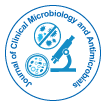

Opinion Article - (2024)Volume 8, Issue 3
Microbial physiology, the study of the biochemical and physiological functions of microorganisms, plays a important role in understanding the behavior and survival strategies of pathogens. Microbes, including bacteria, fungi and viruses, constantly adapt to their environments, enabling them to persist and evolve. This evolution is particularly evident in pathogenic microbes, which can modify their physiological processes to enhance virulence, evade immune responses and resist antimicrobial treatments. Understanding microbial physiology is key to unraveling the mechanisms behind the evolution of pathogenic microbes and developing strategies for effective treatments and disease prevention. This study searches into how microbial physiology contributes to the evolution of pathogenic microbes, focusing on adaptive mechanisms that support survival in host environments, the development of antimicrobial resistance and the implications for clinical microbiology and treatment.
Antimicrobial resistance of pathogenic microbes
Antimicrobial resistance is one of the most pressing challenges in modern medicine. The evolution of resistance in pathogenic microbes is a direct consequence of their physiological ability to survive in environments with antimicrobial pressure. Several mechanisms contribute to the evolution of resistance, including genetic mutations, horizontal gene transfer and changes in microbial physiology. Mutations in microbial genomes can lead to the development of resistance to antibiotics, antifungals, and other antimicrobial agents. These mutations often affect genes involved in drug uptake, drug target modification, or the synthesis of molecules that neutralize the effects of the drug. For example, in Staphylococcus aureus, mutations in the Penicillin- Binding Protein (PBP) lead to resistance to beta-lactam antibiotics. These mutations are typically driven by the selection pressure exerted by the use of antibiotics, where resistant strains survive and proliferate, leading to the spread of resistance. Microbes, especially bacteria, can acquire resistance genes from other microorganisms through Horizontal Gene Transfer (HGT). This process allows pathogenic microbes to rapidly evolve novel resistance mechanisms, bypassing the slower process of mutation. Plasmids, transposons and integrons are common vehicles for the transfer of resistance genes. For example, the widespread emergence of multidrug-resistant Enterobacteriaceae is largely attributed to the horizontal transfer of Extended- Spectrum Beta-Lactamase (ESBL) genes among various bacterial species. This capacity for gene exchange accelerates the evolution of antimicrobial resistance and complicates treatment options. Pathogenic microbes may evolve changes in drug targets to render antimicrobials ineffective. For example, mutations in the target sites of antifungal drugs like azoles can lead to resistance in Candida albicans. Additionally, many bacteria have developed efflux pumps, which actively expel antimicrobial agents from the cell, preventing the drugs from reaching their target. These efflux systems, such as those found in Acinetobacter baumannii and Klebsiella pneumoniae, play an important role in the evolution of resistance by pumping out a variety of antimicrobial agents, making it harder to treat infections.
Functions in pathogenic microbes
Virulence refers to the degree of harm a pathogen causes to its host. The evolution of microbial virulence is closely tied to its physiology and its ability to adapt to the host environment. Several factors influence the development of virulence in pathogenic microbes. Many pathogens produce toxins that damage host tissues and facilitate infection. These toxins can be proteins, enzymes or other molecules that interfere with host cell functions. For example, Clostridium tetani produces tetanospasmin, a neurotoxin that causes muscle paralysis. The production of such virulence factors is a result of evolutionary pressure that allows microbes to enhance their survival within the host. Microbial physiology plays an important role in the evolution of pathogenic microbes by enabling them to adapt to host environments, resist antimicrobial treatments and enhance their virulence. Through mechanisms such as metabolic flexibility, biofilm formation, and genetic mutations, pathogens evolve to thrive in diverse and hostile environments. The ability of microbes to rapidly develop resistance to antimicrobial agents and modify their virulence factors makes them formidable adversaries in the fight against infectious diseases. Understanding microbial physiology is essential for developing novel strategies to combat pathogenic microbes, particularly in the context of rising antimicrobial resistance. Research into microbial adaptations and the mechanisms of pathogenesis will continue to provide valuable insights into preventing and treating infections, improving clinical outcomes and mitigating the impact of evolving pathogens on public health.
Citation: Chen T (2024). Microbial Physiology and its Role in the Innovation of Pathogenic Microbes. J Clin Microbiol Antimicrob. 8: 207.
Received: 21-Aug-2024, Manuscript No. JCMA-24-35609; Editor assigned: 23-Aug-2024, Pre QC No. JCMA-24-35609 (PQ); Reviewed: 06-Sep-2024, QC No. JCMA-24-35609; Revised: 13-Sep-2024, Manuscript No. JCMA-24-35609 (R); Published: 23-Sep-2024 , DOI: 10.35248/ JCMA. 24.8.207
Copyright: © 2024 Chen T. This is an open-access article distributed under the terms of the Creative Commons Attribution License, which permits unrestricted use, distribution, and reproduction in any medium, provided the original author and source are credited.